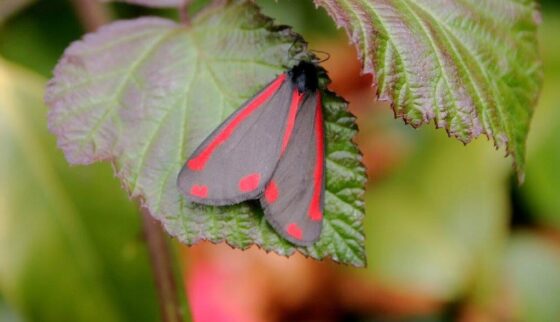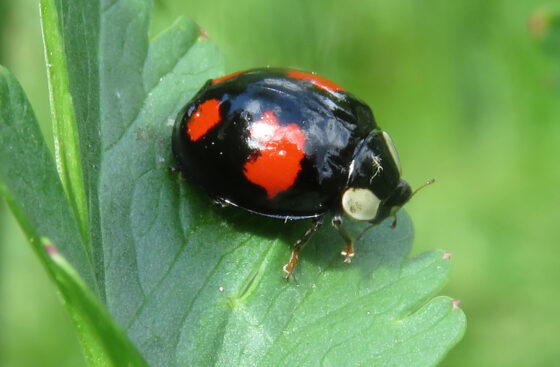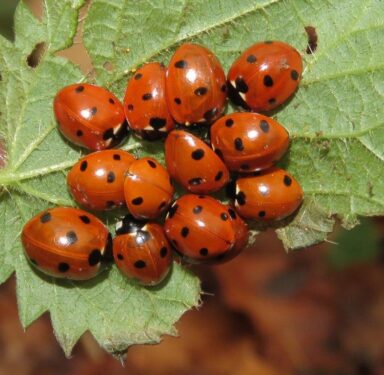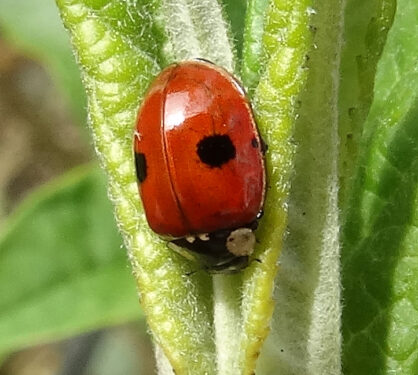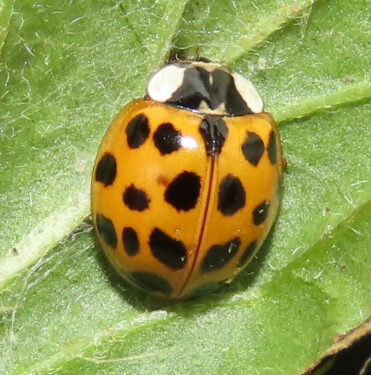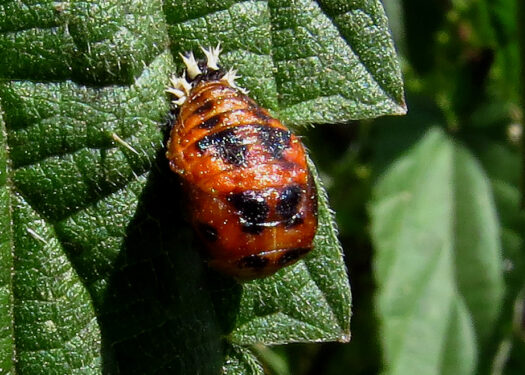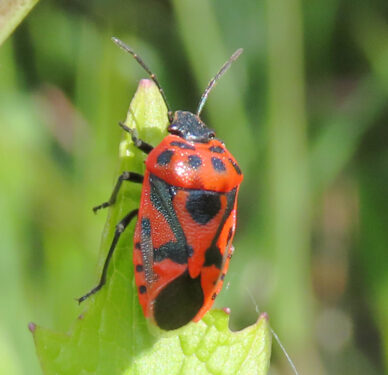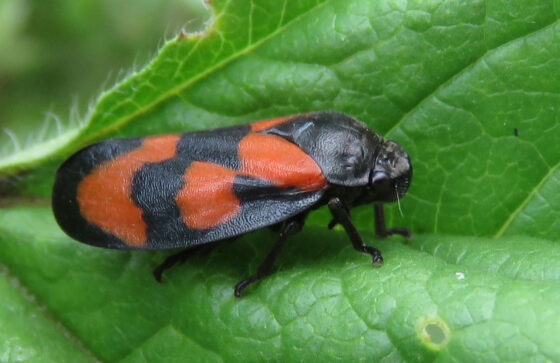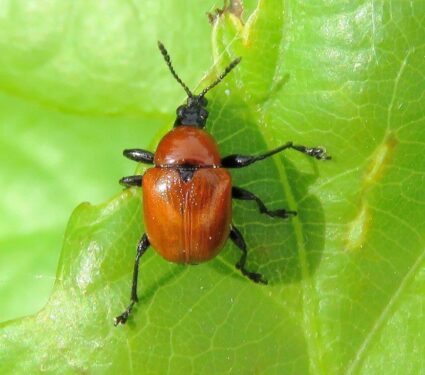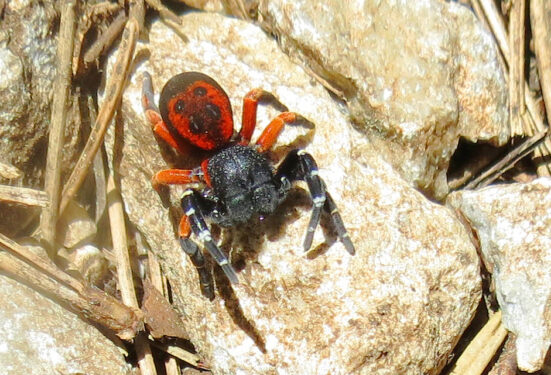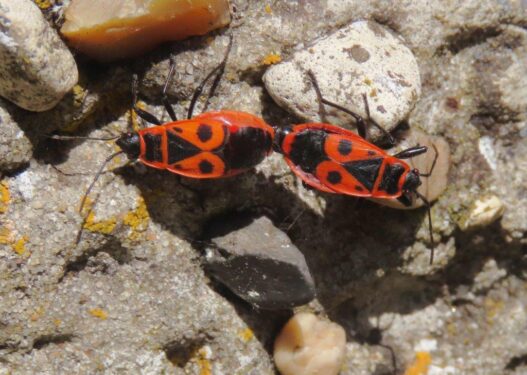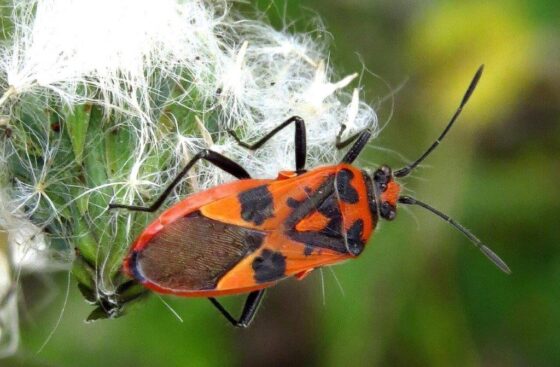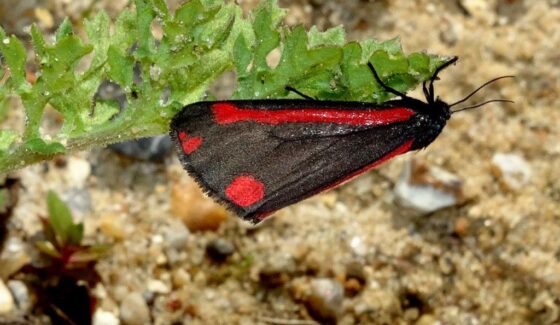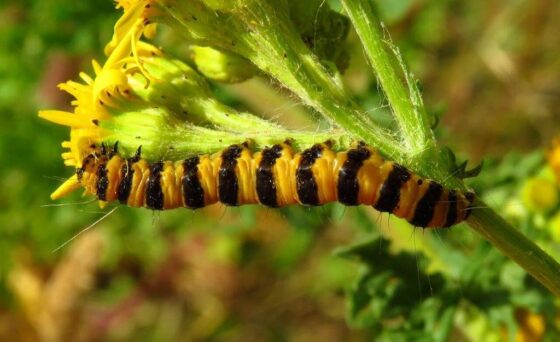Red and black when worn together are such a startling combination – adorned in these colours you will get noticed! We know this, and so do many other members of the natural world.
Insects have many challenges to face, the most important of which is to avoid getting eaten prematurely. They have various tricks up their sleeves to help prevent turning themselves into delicious morsels for a passing bird – one is trying not to get noticed and blending into the background as much as possible (more about this in another blog soon). But some have evolved to ‘wear’ red and black, which says ‘Hey you, Bird….I’m here, but don’t bother trying to eat me – I am probably poisonous or dangerous in some way’. The scientific term for this advertising yourself as unappetising and unpleasant is ‘Aposematism’.
One family of creatures which springs to mind is ladybirds. These come in a variety of forms, not all of which are red and black, but generally the larger types do display these colours to some degree. They are reputedly unpleasant tasting, possibly toxic, and although some predators may attack them, their coloration acts as a deterrent. The reasoning for this relies on the memory of a would-be predator – a bird that had tried a ladybird and realised how terrible it tasted wouldn’t be keen to try it again. Therefore there is no need to hide away, but to feel free to pick and choose where and when to eat or lay eggs and not to have to be constantly looking over your shoulder.
Ladybirds’ pupae are quite conspicuous, boldly marked and not camouflaged. Although during this phase of their lives they are totally unable to defend themselves (apart from a bit of wiggling), they are still relatively safe due to their reputation.
Some red and black creatures may not themselves be particularly offensively tasting, or poisonous, but are similarly coloured to those that are, giving them a degree of protection. This is known as Batesian mimicry ie they look similar enough to known evil-tasting insects to pass themselves off as such.
Below is a selection of some British red and black beasties:
Ornate Shield-bug – a rare visitor to these shores. This individual was photographed by us recently and was the first for Essex.
Red-and-Black Froghopper – commonly found in spring and summer, a handsome wee thing, albeit the largest froghopper we have.
Oak Leaf-roller – a bright and shiny beetle whose grubs live in a rolled-up Oak leaf.
Ladybird Spider – very rare in UK, only the male is warningly coloured: the female is all velvety black.
Fire-bug – again a rarity in UK, although a population has recently been discovered for the first time in Essex. Previously their colonies have tended not to live many years on our shores, as they are a southern species, probably unable to withstand frosts.
Cinnamon Bug – increasingly seen in gardens, this one is definitely toxic as it feeds happily on the most poisonous plants, such as Deadly Nightshade and Henbane.
Cinnabar Moth – a handsome creature, particularly stunning when seen in flight. The caterpillars are striped yellow and black which is also a warning coloration in nature. These can often be spotted munching away on Ragwort, a plant is known to be poisonous to livestock. The caterpillars themselves absorb the toxicity of the plant and so are themselves toxic to birds, and this is passed on through to the adults.
For more red-and-black beasts, at home and abroad, please visit the Red And Black photo gallery.
